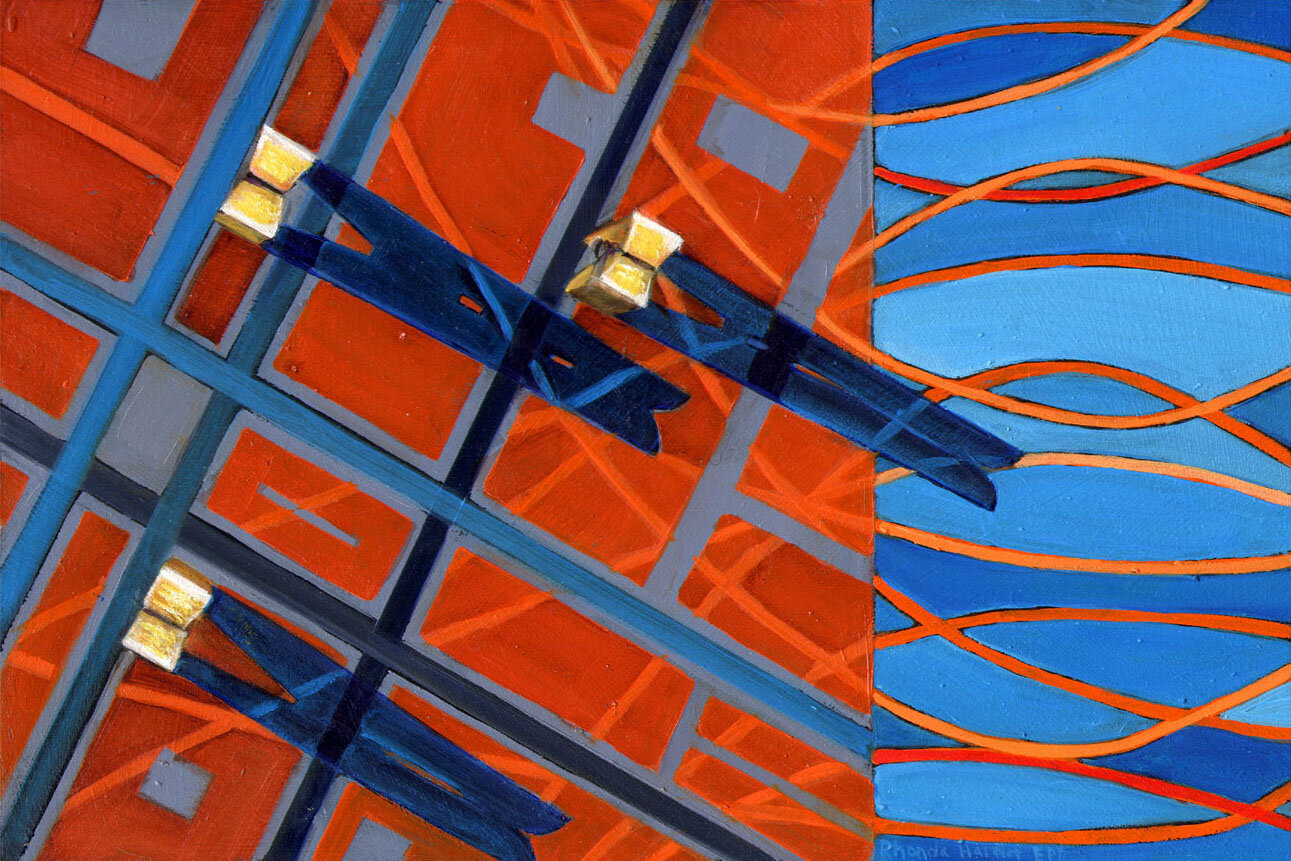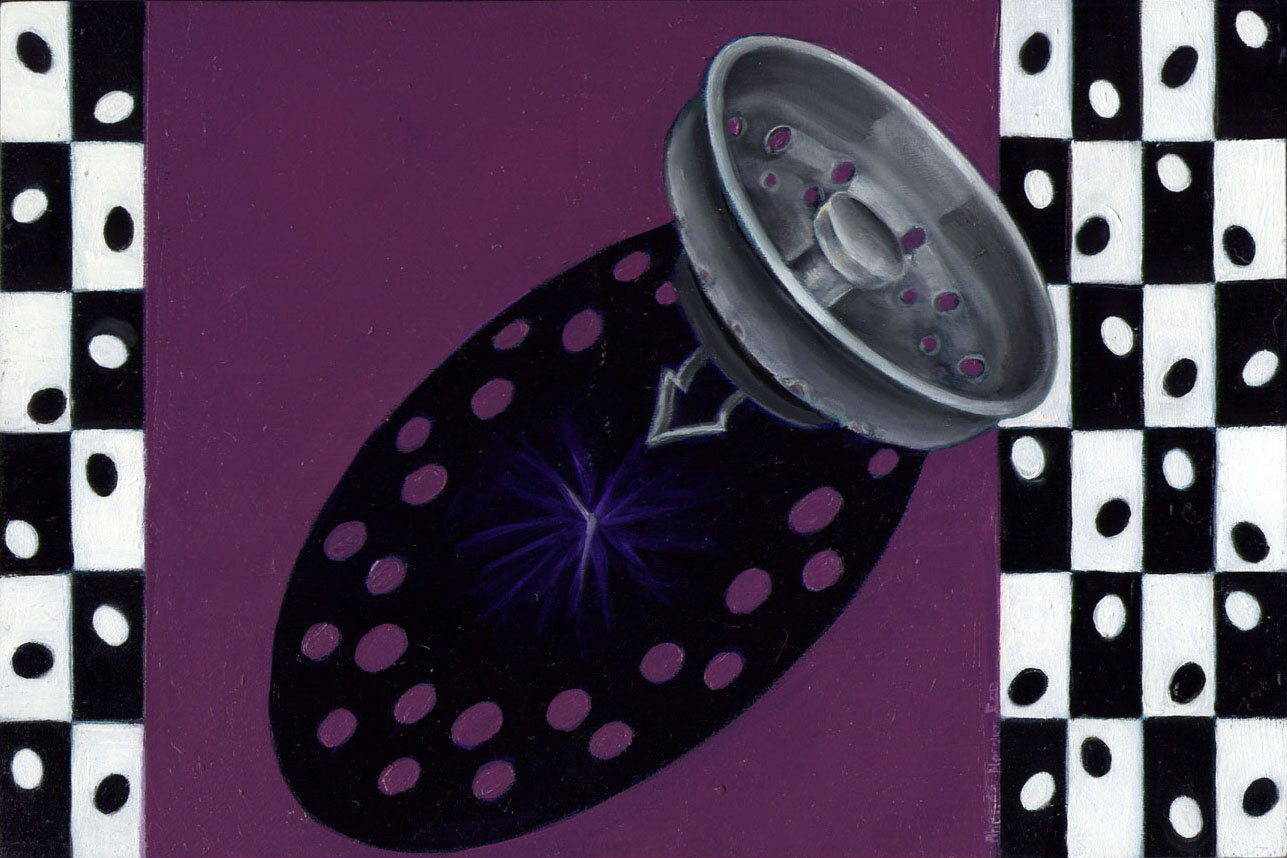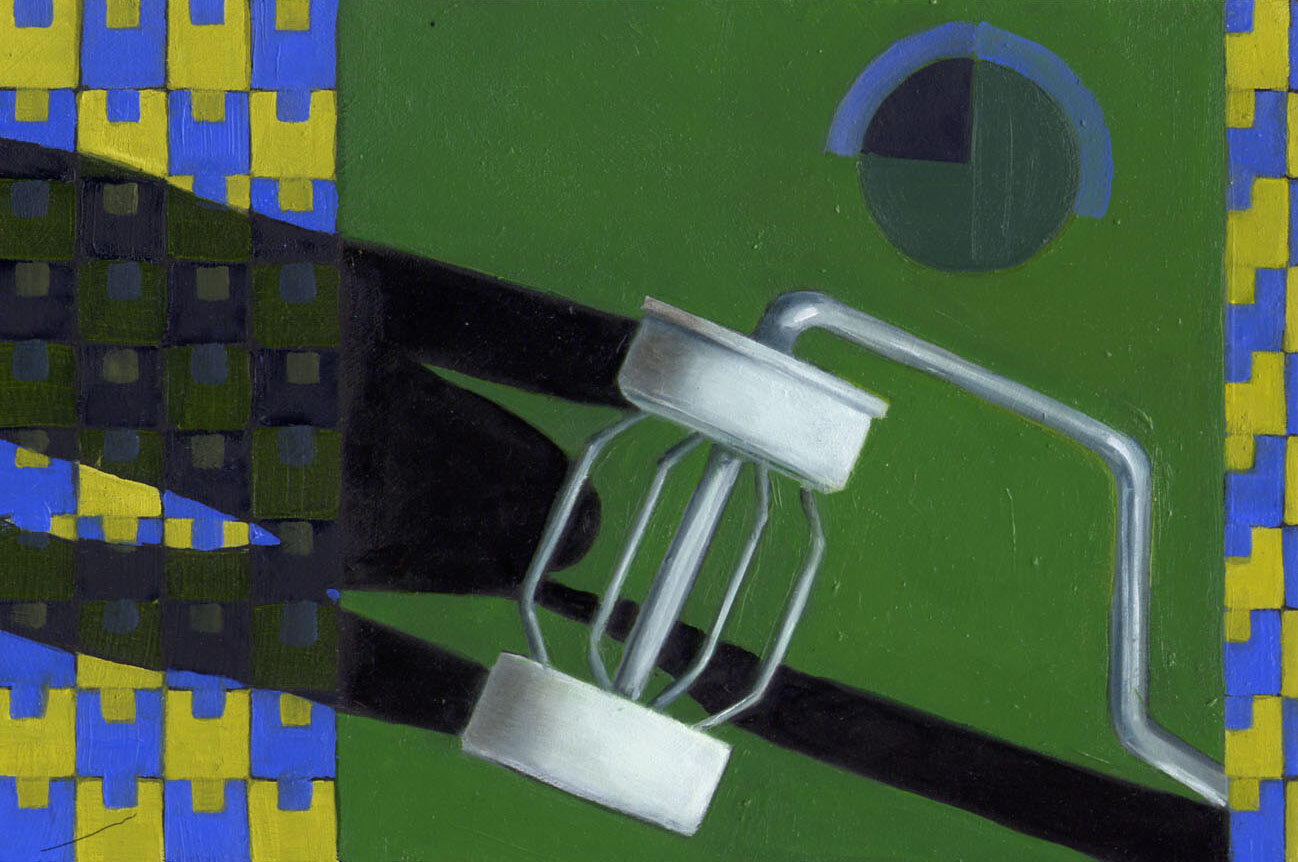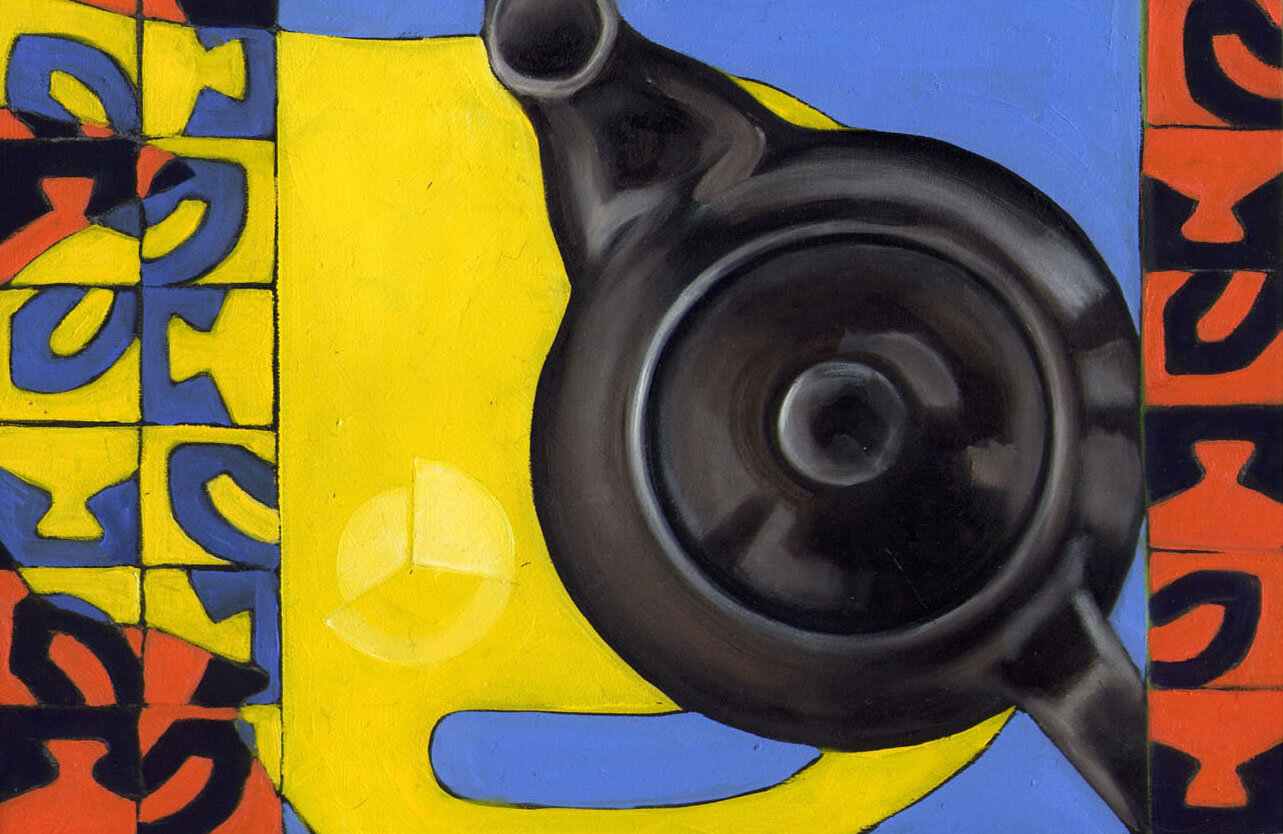
On Time
“The often heard lament, “I have so little time,” gives the lie to the delusion that the daily is of little significance. Everyone has exactly the same amount of time, the same twenty-four hours which many a weary voice has uttered the gospel truth: ‘Sufficient unto the day is the evil thereof.’”
I have an enduring interest in time. At the root of it is a curiosity about what other people do with their time. My own days can often best be described as a list of tasks advanced or completed, preferably with something created. I paint, knit and walk the dog; I rarely watch TV or go to meetings. Thinking about how time is spent is just a beginning, and as it turns out, a very modern idea. When I started to pay attention to time references in magazines, newspapers and novels, and then did more concerted reading about clocks and time, I realized that the qualitative understanding of time had shifted. Exploring time as an entity that is not entirely fixed, particularly in perception, is the basis for this painting project.
Shadows, first of all, figure prominently. Unlike a sundial, which can give the time by reading the shadow of the gnomon on a marked surface, these shadows are not time-telling; they refer to a different consciousness about time. This other kind of time is multidimensional – it is sacred and profane; it operates cyclically not horizontally. Charles Taylor writes:
In earlier ages, the understanding was that this profane time existed in relation to (surrounded by, penetrated by; it is hard to find the right words here) higher times. Premodern understandings of time seem to be always multidimensional. Time was transcended and held in place by eternity, whether that of Greek philosophy or of the biblical God. In either case, eternity was not just endless profane time, but an ascent into the unchanging, or a kind of gathering into unity…

Timepiece – Clothes Pins // 9 x 6 in (23 x 15.5 cm) oil on board // SOLD

Timepiece – Fork // 9 x 6 in (23 x 15.5 cm) oil on board // SOLD

Timepiece – Glasses // 9 x 6 in (23 x 15.5 cm) oil on board // SOLD

Timepiece – Headphones // 9 x 6 in (23 x 15.5 cm) oil on board // SOLD

Timepiece – Heart // 9 x 6 in (23 x 15.5 cm) oil on board // SOLD

Timepiece – Pencil // 9 x 6 in (23 x 15.5 cm) oil on board // SOLD

Timepiece – Plug // 9 x 6 in (23 x 15.5 cm) oil on board // SOLD

Timepiece – Paint Roller // 9 x 6 in (23 x 15.5 cm) oil on board // SOLD

Timepiece – Teapot // 9 x 6 in (23 x 15.5 cm) oil on board // SOLD
Until the 15th C sundials located on church walls were the chief formal device for telling time. People’s lives were governed by the seasons and the church year; measuring time was irrelevant; punctuality was unknown; notions of the past and future were blurry. By the 17th C most parishes had a church clock – set by a sundial. In time, clocks became more dependable. The church, monks particularly, pursued increased clock accuracy to better schedule prayer and work; factories, as they developed, needed shift schedules and introduced the idea of pay for time worked. David Landes claims that: “The clock did not create an interest in time measurement; the interest in time measurement led to the invention of the clock.” Even so, the question of which came first, time measurement, or time consciousness, seems rather more moot if you consider that in the paradigm shift, time – all profane now – had a different purpose to serve.
Secondly, many of the paintings have a square format; several have squares as elements in the design. The squares refer to two things: 1) the division of time into equal sized units and 2) our experience or perception of those units as anything but equal. The division of time, first of all, although constantly refined (clocks started with one hand roughly indicating the hour, and now scientists are dissatisfied with a clock that loses one second every 1.4 million years), has continuously used the same units: year, day, and hour. Unlike the mathematical recalculations over several centuries trying to exactly determine the length of a year, and the consequent variation in calendars, the 24 hour day as established by the Babylonians (reflecting their interest in the zodiac) remained unchallenged. Squares, like time, can be divided into any number of smaller squares or units, which butt up against each other without any left-over space. In April 1, 2005 each hour is represented by a 6 inch square. The ‘hours’ are joined end to end – linear time. In the Time Pieces a 6 inch square represents an undeclared portion of time; the remaining surface is divided into some kind of equal portions, but these vary from painting to painting. That is because time often doesn’t feel like it passes at the same rate. The faster one tries to accomplish something, the faster, it seems, time passes. When waiting, conversely, the hands on the clock seem to crawl.
Squares, as minutes or time units, are used in a few other ways. First, a few paintings –Spring Forward, Fall Back and Ordinary Time – have dislodged minutes/squares, that is, they are free floating, unattached squares. There has to be some mental space for imagining time differently.
As Thomas Wharton writes in Salamander:
What if time is not what we imagine it to be? Not a smooth continuous absolute, the same for everyone?
Ordinary Time // 84 x 12 in (213.5 x 30.5 cm) oil on canvas // SOLD
April 1, 2005 // 72 x 6 in (366 x 15.2 cm) oil on board // SOLD
Spanish Shadows 1 (Madrid) // 30 x 30 in (76.5 x 76.5 cm) oil on canvas // SOLD
Spanish Shadows 2 // 30 x 30 in (76.5 x 76.5 cm) oil on canvas
Sun Jester // 24 x 24 in (62 x 62 cm) oil on board
Dog Years // 24 x 24 in (62 x 62 cm) oil on board // SOLD
Second, while there is more than one palimpsest painting among the set, the most obvious one is Dog Years. The squares are underneath.
Finally, the painting, Ordinary Time, had two major influences which I would like to acknowledge. The first was a small painting I saw in the Thyssen-Bornemisza Museum in Madrid. In the Madonna of Humility, by Giovanni di Paola, the Madonna has the Christ child on her lap; two angels are approaching her with what looks like laundry – I presume, clean swaddling clothes. I borrowed the idea of laundry from this image and consulted the colour scheme. The second influence was a novel, Our Lady of the Lost and Found, by Diane Schoemperlen. In the passage I am about to quote, the narrator is speaking about what Mary, who is visiting, told her:
According to the Catholic liturgical calendar, she explained, all the days of the year that are not Lent, Easter, Advent or Christmas are called Ordinary Time. So here we are: Easter is over and Christmas is still a long way off. I guess you could say this is the time in which we’re meant to feel that we have all the time in the world.
I could see what she meant. Ordinary Time is all those days that blend one into the next without exceptional incident, good or bad; all those days unmarked by either tragedy or celebration. Ordinary Time is the spaces between events, the parts of a life that do not show up in photo albums or get told in stories. In real life, this is the bulk of most people’s lives. But in literature, this is the part that doesn’t make it into the book.
This painting includes ‘to-do’ lists of the most ordinary kind (most of which are decipherable), gold metallic paint (homage to the iconic tradition), and there are shadows and squares with all the connotations therein. Time is ordinary. Time is sacred.
Rhonda Harder Epp
2006





